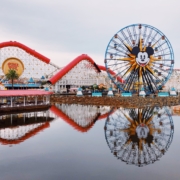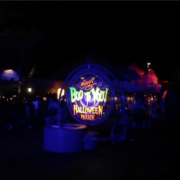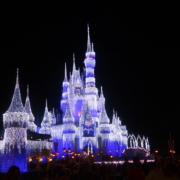6 Famous Castles of Europe to Live Out Your Fairytale Vacation
For decades, people worldwide have come to Europe to see some of its most famous castles. If you’ve ever been fascinated by fairy tale architecture, then take inspiration from this list of the best European castles to visit to indulge your inner child.
Neuschwanstein Castle, Germany
Built in the late 19th century by Bavarian King Ludwig II, Neuschwanstein Castle famously served as Walt Disney’s inspiration for the castle featured in the company’s iconic logo.
Located in the pristine beauty of the Bavarian Alps, the castle’s dramatic towers, turrets, and corniced stone façades stand in relief against a sweeping plain that separates the castle hilltop from the larger mountains. As you walk on the turrets or stroll through the surrounding landscape, you can’t help but feel the same childlike sense of wonder that inspired Disney’s early animators and storytellers.
Alcázar of Segovia, Spain
The story of Cinderella was originally popularized in Europe by German brothers Jacob and Wilhelm Grimm in the early 19th century. However, the castle that readers and audiences of Cinderella have most strongly associated with the fairy tale ball sits on a stony perch in Spain’s autonomous region of Castile and León.
The site’s history as a fortification spans back to the time of the Roman Empire and includes several distinct periods of construction during both Spain’s medieval Islamic history and restoration efforts under Spain’s Charles III. Today visitors can explore the castle’s network of rooms featuring tapestries and coffered ceilings as well as a unique armory in the Museum of the Royal College of Artillery.
Chateau de Chambord, France
France’s Loire Valley is a UNESCO World Heritage site and is world-renowned for its charming vineyards, historic towns, and often painted landscapes. In the mid-16th century, French King Francis I had Chateau de Chambord constructed in the eastern Loire Valley as a symbol of the grandeur of the French monarchy and as a country getaway for his personal hunting retinue of more than 2,000 attendant nobles, servants, and guards.
The castle’s notable architectural features include a symmetrical exterior design, 440 rooms, 365 fireplaces, and 84 staircases—the most famous of which is a double helix staircase rumored to have been designed by Leonardo da Vinci. In the evenings, the castle reflects beautifully in the waters of the diverted canals of the Loire River that border the grounds, giving visitors a chance to capture a vivid image of the structure’s flawless symmetry.
Hohenzollern Castle, Germany
Atop a hill overlooking the Swabian Alps in the Baden-Württemberg region of Germany sits Hohenzollern Castle. Constructed by Prussian royalty in the mid-19th century, the castle’s Gothic Revival architecture—featuring multiple layers of towers, turrets, and battlements—embodies the spirit of European folklore captured in descriptions of King Stefan’s castle in Sleeping Beauty.
With picturesque medieval city centers and networks of hiking trails through the nearby forests and hill country, the surrounding Baden-Württemberg area is a worthy vacation destination in its own right. Unsurprisingly, Hohenzollern remains one of the most visited castles in Europe year-over-year.
Eilean Donan, Scotland
Used in many well-known movies such as Highlander, The World Is Not Enough, and Elizabeth: The Golden Age, the castle of Eilean Donan occupies a small tidal island in the Scottish Highlands’ Loch Duich. Standing on the cobblestone bridge that connects the castle site to the green and rugged lakeshore, you’ll quickly understand why Eilean Donan is one of the United Kingdom’s most photographed castles.
Scottish highlanders first fortified Eilean Donan in the 13th century as a refuge from frequent Viking incursions. After centuries of use in a variety of conflicts, the English Royal Navy destroyed most of the older structure in 1719 during the Jacobite Uprising.
Wishing to preserve the site’s storied history and architectural beauty, Scottish and British Army officer Lt. Col. John MacRae-Gilstrap had the castle meticulously reconstructed in the early 20th century. Owing to its recent reconstruction, the present structure is both thoroughly accessible and a window into the medieval history of the Highlands.
Bran Castle, Romania
If you’re an enthusiast for both European castles and the darker side of fairy tales and folklore, Romania’s Bran Castle nestled in the mountains of Transylvania has just what you’re looking for. Local accounts have identified Bran Castle as the home of the mythical Count Dracula for centuries.
Today the well-preserved 14th-century fortress fits seamlessly into the eerie landscape of the forested slopes of the Carpathian Mountains. Visitors can explore the castle’s interior—now a museum—and wander to the nearby village of Bran.
So, which of these enchanting castles will you choose to visit first? Whether you’re a fairy tale fan, a history buff, or simply seeking a dose of magic, Europe’s castles are waiting for you. Let’s start planning your dream trip today and let the spellbinding beauty of these castles transport you to a world of wonder and awe.

















